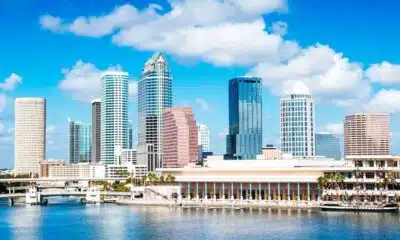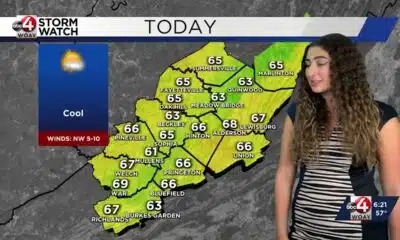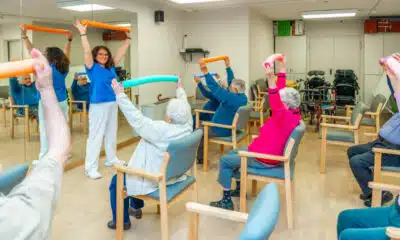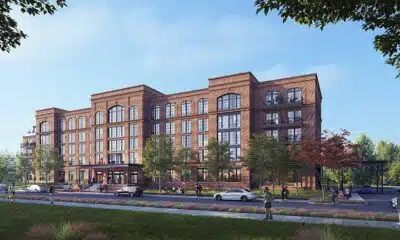News from the South - Louisiana News Feed
Louisiana looks to expand liability for abortions, which could lead to more lawsuits
by Piper Hutchinson, Louisiana Illuminator
May 15, 2025
The Louisiana House of Representatives voted Wednesday to expand who can sue and be sued over abortions and to expand the definition of an illegal “coerced abortion.”
The legislation comes as anti-abortion advocates seek to crack down on doctors who ship of abortion-inducing medication to states where abortion is illegal. In nearly all cases, abortion has been illegal in Louisiana since the U.S. Supreme Court overturned Roe v. Wade in June 2022.
House Bill 575 by Rep. Lauren Ventrella, R-Greenwell Springs, passed on a 59-29 vote. She has dubbed her proposal the “Justice for Victims of Abortion Drug Dealers Act,” though it would apply to all forms of the procedure.
Ventrella’s bill is supported by Attorney General Liz Murrill, who is currently prosecuting a case against a New York doctor accused of providing abortion-inducing medication to a minor in West Baton Rouge Parish. Gov. Kathy Hoschul has refused to extradite the doctor to Louisiana to face charges, citing New York’s shield laws.
The doctor and the minor’s mother were both indicted. Murrill has alleged the minor was coerced to take the medication, though her mother was not charged with this crime.
Current law allows the “mother of the unborn child” to sue any person who performs an abortion, but Ventrella’s bill adds her parents, the man who impregnated her and his parents as potential plaintiffs. They could sue anyone who causes or “substantially facilitates” an abortion, regardless of whether the procedure was successful. The bill denies men the right to sue if the pregnancy was the result of rape, sexual assault or incest.
GET THE MORNING HEADLINES.
The bill’s opponents argued it could lead to lawsuits that violate the privacy of people alleged to have had an abortion.
“My fear is you’re involving a lot of other people … Some women I’ve known, and I’m sure you’ve known, have had repetitive miscarriages through no fault of their own,” Rep. Stephanie Hilferty, R-New Orleans, said. “The last thing I want is somebody bringing this saying, ‘Well, there’s no way there can be this many miscarriages,’ and that’s going to pull this woman and her medical records into a potential lawsuit.”
Ventrella said plaintiffs still have to meet the burden of proof.
“Frivolous lawsuits are taken care of on the front end,” she said.
Republican and Democratic legislators raised concerns about the procedural language of the proposal.
Rep. Brian Glorioso, R-Slidell, asked Ventrella to delay a vote on her bill to work out what he sees as potential kinks. The legislation would create absolute liability, which does not require proof of negligence or fault, he said. Most Louisiana lawsuits require plaintiffs to prove liability rather than the law assuming it, Glorioso said in an interview.
Glorioso said he would have supported the bill if Ventrella addressed some of the procedural concerns he has. He was absent from the House chamber when lawmakers voted on the bill, as were several other Republican lawmakers who were present for other votes Wednesday.
Rep. Mandie Landry, D-New Orleans, raised concerns that Ventrella’s bill does not define “cause,” which she said could lead to people being sued for loaning money for an abortion, driving someone to a clinic or other actions that support a person who has an abortion.
Ellie Schilling, an attorney who represented abortion providers before the state ban took effect, said that while the title of the bill includes the word “unlawful,” it’s the only time it appears in the bill. That would allow lawsuits to be brought against providers of legal abortions, she said.
While they are rare, Louisiana law does allow abortions when a doctor believes they are necessary to “prevent the death or substantial risk of death” of a pregnant person.
In its original state, Ventrella’s bill would have also allowed drug manufacturers to be sued, but she added amendments to the bill to exclude them. Abortion-inducing drugs, most commonly mifepristone and misoprostol, have a number of other uses, including for miscarriage management, treating postpartum hemorrhage and inducing labor.
Last year, lawmakers reclassified both drugs as controlled dangerous substances despite concerns from medical professionals it could make them more difficult to access in time-sensitive medical crises.
Ventrella’s bill would allow a judge to award a minimum of $100,000 in damages if the defendant is not licensed to practice medicine in Louisiana, is not licensed to dispense medication in Louisiana or is a foreign company. Plaintiffs can also receive damages for emotional distress, court costs, attorneys fees and additional damages when the pregnant person is a minor.
House Bill 425 by Rep. Josh Carlson, R-Lafayette, passed on an 80-10 vote.
His measure would expand the definition of coerced abortion, which is currently defined in state law as the “use or threatened use of force, control, or intimidation” against a pregnant woman to compel her to undergo an abortion against her will, regardless of whether the procedure has been attempted or completed.
Carlson’s legislation originally sought to expand the definition of coerced abortion to include the pregnant person’s actions, but it was substantially trimmed back in committee to add battery, assault, simple kidnapping, false imprisonment and extortion to the existing definition.
YOU MAKE OUR WORK POSSIBLE.
Louisiana Illuminator is part of States Newsroom, a nonprofit news network supported by grants and a coalition of donors as a 501c(3) public charity. Louisiana Illuminator maintains editorial independence. Contact Editor Greg LaRose for questions: info@lailluminator.com.
The post Louisiana looks to expand liability for abortions, which could lead to more lawsuits appeared first on lailluminator.com
Note: The following A.I. based commentary is not part of the original article, reproduced above, but is offered in the hopes that it will promote greater media literacy and critical thinking, by making any potential bias more visible to the reader –Staff Editor.
Political Bias Rating: Center-Right
This content primarily reports on Louisiana legislation aimed at restricting abortion access and expanding legal accountability for abortion-related actions. The coverage is fact-based and includes perspectives from both supporters and opponents of the bills, reflecting common conservative and moderate Republican viewpoints on abortion restrictions. The emphasis on legal measures and protection of unborn children aligns more closely with center-right, pro-life positions, although the inclusion of concerns raised by some lawmakers and legal experts adds a moderate, balanced dimension to the presentation.
News from the South - Louisiana News Feed
Since Katrina, infrastructure shortcomings create resiliency fatigue
by Elise Plunk, Louisiana Illuminator
August 26, 2025
An American flag has been strategically placed on one of the massive beams supporting the Lake Borgne Surge Barrier, part of the New Orleans region hurricane and storm damage risk reduction system.
Completed in 2009 to close off the Mississippi River Gulf Outlet, the barrier is designed to decrease damage to the metropolitan area when a major hurricane pushes water from the Gulf of Mexico into the lakes that surround the city and neighboring parishes.
The flag on the wall symbolizes pride and mourning, a reminder of the people it protects and a memorial for those who died 20 years ago when Hurricane Katrina hit. The failure of the federal levee system Aug. 29, 2005, claimed more than a thousand lives, displaced nearly a million people in the region and left permanent scars on New Orleans.
A go-to term emerged to praise New Orleanians and their neighbors who persevered through the catastrophe and took part in the unprecedented rebuilding: resilient. But as various recovery programs faltered and efforts to ensure disaster history would not repeat itself stalled, “resilient” or “resiliency” now elicit bitter feelings among locals.
“I think people have gotten tired of the word. Not just because it’s become cliché, but because people have begun to understand it as an excuse for lack of preparation or execution, lack of planning or execution,” said Michael Hecht, CEO and president of Greater New Orleans Inc., a regional economic development group.
Hecht came to Louisiana in 2006 from New York, where he led a 9/11 small business recovery program for New York Mayor Michael Bloomberg. After directing the state’s post-Katrina business recovery efforts, he was chosen to lead GNO Inc. in 2008.
“We had been knocked down by an unprecedented event,” Hecht said. “It was either be resilient or die, so we were resilient.”
The world has watched as New Orleans fundamentally changed, having lost a significant portion of its Black working class and attracting an upsurge in mostly white transplants from out of state. With more than 484,000 residents before Katrina, the city’s population plummeted below 344,000 in the 2010 census. The number climbed above 391,000 in 2020 and has since fallen about 4% as of 2024, according to various estimates.
Most who have stayed are ardent defenders of the city’s culture, of which resiliency fatigue is quickly becoming a feature. It’s reflected in Louisiana’s slow progress to rebuild coastal land and improve the adaptability of cities to match what post-Katrina boosters envisioned.
GET THE MORNING HEADLINES.
Restoration resistance
After Katrina, more emphasis was placed on rebuilding Louisiana’s vanishing coastal wetlands to protect residents from the increasing threat of hurricanes. A state Coastal Master Plan has taken shape over the past two decades, gaining official approval in 2023, to tie together restoration efforts and shield wetlands from sea level rise, subsidence and worsening hurricanes.
“We learned from Hurricane Katrina that levees alone aren’t enough,” said Alisha Renfro, a coastal scientist with National Wildlife Foundation. “We also need a healthy natural ecosystem sitting out in front of those levees to protect the structures that protect our communities.”
But the master plan encountered a huge setback in July with the end of what had been its keystone project, the Mid-Barataria Sediment Diversion project. Gov. Jeff Landry led pushback against the project for its feared impact on fisheries and nearly $3 billion price tag.
So far, the state’s Coastal Restoration and Protection Authority has spent $600 million to harness the power of the Mississippi River to bring fresh water and sediment to wetlands in the Barataria Basin – only to shelve the diversion.
“It was probably one of the most innovative, forward-thinking things in terms of being a resilience hub for the world,” said Amanda Moore, senior director for the National Wildlife Federation’s Gulf program.
A lifetime Gulf Coast resident, Moore moved to New Orleans from the Tampa, Florida, area in 2009 to take a job as a community organizer with the National Wildlife Federation. She joined the wave of thinkers, scientists and planners who came to the city after Katrina with the hope of bringing relief from the constant threat of flood.
“For people who live on the Gulf Coast – and especially South Louisiana – it’s exhausting,” she said.
The federation was among the voices that influenced upgrades to the region’s storm risk reduction system in the years after Katrina. Moore led efforts such as the MRGO Must Go Coalition, advocating for reversal of wetlands damage attributed to saltwater intrusion from the Mississippi River Gulf Outlet.
“You’re helping to alleviate maybe some of that exhaustion that people are personally feeling when you do the coastal restoration,” Moore said. “You’re adding this layer of protection, you’re helping it create a healthier environment that’s safer, so that does help people really be more resilient and not burnt out.”
Funding momentum peters out
As Katrina and its aftermath garnered worldwide attention, the recovery money streamed in from Washington and charitable foundations. The federal government directed $76 billion to Louisiana projects.
But keeping up the pace of investment after post-disaster attention spans waned became a problem for state and local leaders. Even with billions of dollars put into infrastructure, billions more would be needed for upkeep and replacing outdated systems. Stormwater drainage and drinking water in New Orleans, for example, rely on a power supply and mains that, in many spots, are more than a century old.
Charles Allen, Gulf Coast community engagement director for the National Audubon Society, recalls the vast amounts of federal and philanthropic dollars directed to the region in the years immediately after Katrina – and the dropoff that followed. It revealed the inability of state and local governments to sustain the level of rebuilding needed.
“It’s like anything in life, you know?” Allen said. “We gotta maintain our bodies, and we have to invest in whatever it takes to do that.”
The 2010 explosion of the Deepwater Horizon just off the Southeast Louisiana coast reopened wounds in the region that had yet to heal from Katrina’s trauma. Like the levee failures after the hurricane, It was considered another manmade, preventable disaster. Eleven crew members were killed, and the catastrophic oil spill tainted wildlife and habitat in all five Gulf Coast states. Livelihoods that depended on the Gulf were sidetracked for months, if not ended entirely.
Petroleum giant BP, which contracted the drillship, reached a $20 billion settlement with the federal government and impacted states. In Louisiana, it provided the long-sought financial foundation for its coastal master plan.
But with the Mid-Barataria Sediment Diversion shelved – and seemingly no other major restoration projects in the queue – Allen and others with vested interest in coastal flood protection fear Louisiana has become dependent on disaster recovery funding to pay for critical infrastructure that should already be in place.
“Let’s not wait for another storm because then it’s always too late when that happens,” Allen said “You gotta invest in it, you gotta support it, you’ve got to fund it.”
“It’s a lot of reactive disaster-related funding that’s allowing Louisiana to do this work,” Moore said. “We’ve got to figure out how to get out of that cycle.”
‘People can just be people’
Katrina recovery funds paid for upgrades to the massive pumping stations at the end of New Orleans’ outfall drainage canals that pump stormwater into Lake Pontchartrain. Beyond that, however, the city hasn’t engineered a way to handle street flooding from routine heavy rainstorms.
One project was held up as a way for New Orleans to adapt to the regular influx of rainwater, rather than fruitlessly attempt to pump it away. The Gentilly Resilience District called for turning neutral grounds in the neighborhood into retention areas. Residents would be encouraged to add features such as rain cisterns and permeable driveways, with grants to cover their cost.
The centerpiece of the district was the Mirabeau Water Garden, planned for 25 acres of land that were once home to a Catholic convent. The Congregation of the Sisters of St. Joseph donated the land to the city in 2015 on the condition it be used to enhance and protect the neighborhood. It was designed to divert and hold up to 10 million gallons of stormwater in ponds and constructed wetlands, with a pedestrian path and other amenities to invite the public into the space.
The architecture firm Waggonner and Ball designed the water garden using best practices for how to integrate water into a coastal urban setting. The idea came out of a trans-Atlantic collaboration after Katrina called the Dutch Dialogues, in which New Orleans experts tapped into the Netherlands’ experience living with water.
The federal government provided $141 million to the city in 2017 to bring the Gentilly Resilience District to life, with a completion date set for September 2022. But as of 2023, the U.S. Department of Housing and Urban Development noted that only 15% of the money had been spent. The water garden remains largely unfinished.
HUD’s inspector general designated the city a “slow spender” in a project audit, noting that its elements “did not always improve the program participants’ ability to withstand future extreme events.”
In addition to his role with GNO Inc., Hecht was named chairman of the governor’s committee to prepare New Orleans for the 2025 Super Bowl, played in February at the Superdome. Part of Hecht’s charge was to track progress on city infrastructure projects. And while the Gentilly Resilience District is well outside the city’s tourist zone, its lack of progress was noticeable.
“It’s happening. It’s been accepted as a concept, but it’s been extremely slow,” Hecht said. “And that’s just been execution failure, oftentimes on the part of the city.”
The communications team for the city of New Orleans did not respond to a request for comment on the timeline of finishing the Mirabeau Water Gardens.
The Mirabeau Water Garden’s status is considered by residents to be symbolic of New Orleans falling well short of the post-Katrina vision that boasted resilience as a key component of its new economy. Much like the Netherlands, it was thought that the Crescent City could become a beacon of expertise for how to adapt to climate change.
“We thought we were going to be able to really build a sector around selling our experience post Katrina with water management and environmental management around the world,” Hecht said. “If we’re being honest, it has not materialized much as part of our economy.”
It has happened in a small way, he said, citing the Water Institute in Baton Rouge. The independent research center focuses on the Mississippi River Delta and Gulf Coast, and it has applied its expertise to several projects in the region.
“But I think there’s still a lot more,” Hecht said.
Allen believes the opportunity to make Louisiana that hub of water management and resilience still exists, but he acknowledged it is still far from materializing 20 years after Katrina.
“This story of restoration, it’ll never end, which is a good thing,” Allen said. “This kind of work fuels jobs, environmental research and teaching.”
Until or unless that sector develops, the vulnerability of southeast Louisiana to future disasters will continue to place a strain on its residents, observers say, and climate change only heightens that risk.
“That is the goal … building structures, either literally or metaphorically, strong enough so that in a world with climate change and weather volatility, when things happen, either natural or man made, we don’t have to be resilient,” Hecht said.
Renfro, the coastal scientist with the National Wildlife Federation, said it’s wrong to keep placing the same burden of recovery on a population forced to accept conditions beyond their control.
“Asking the same people again and again to be resilient … it feels unfair,” she said. “People can just be people, and infrastructure can be resilient.”
YOU MAKE OUR WORK POSSIBLE.
Louisiana Illuminator is part of States Newsroom, a nonprofit news network supported by grants and a coalition of donors as a 501c(3) public charity. Louisiana Illuminator maintains editorial independence. Contact Editor Greg LaRose for questions: info@lailluminator.com.
The post Since Katrina, infrastructure shortcomings create resiliency fatigue appeared first on lailluminator.com
Note: The following A.I. based commentary is not part of the original article, reproduced above, but is offered in the hopes that it will promote greater media literacy and critical thinking, by making any potential bias more visible to the reader –Staff Editor.
Political Bias Rating: Center-Left
This content primarily focuses on the environmental, social, and governmental challenges faced by New Orleans post-Hurricane Katrina. It highlights the shortcomings of government and infrastructure in adequately preparing for and responding to disasters, emphasizes the need for investment in sustainable and natural coastal restoration efforts, and discusses social issues like demographic changes and economic recovery. The article critiques political and administrative decisions, such as the shelving of major restoration projects and slow spending of federal funds, from an angle that favors proactive climate resilience, environmental protection, and equitable recovery efforts—stances typically associated with center-left perspectives. However, it avoids overt partisanship or ideological rhetoric, maintaining a fact-based and nuanced approach.
News from the South - Louisiana News Feed
Monday Noon Tropics Update: Fernand heads north, Invest 99 fizzles
SUMMARY: Tropical Storm Fernand is improving in organization with 60 MPH winds but faces increasing wind shear and cooler waters as it moves north, likely weakening by Wednesday without threatening land. Invest 99 in the eastern Caribbean remains disorganized with strong wind shear, leading the National Hurricane Center to drop its development chance to 0%. The hurricane season has reached Fernand, with Gabrielle and Humberto next on the list, though no new formations are expected soon. Approaching the peak hurricane season around September 10, activity is likely to continue through September, with cooling temperatures and increased rain chance as fall approaches.
Meteorologist Alexandra Cranford tracks Tropical Storm Fernand and Invest 99 at noon on Monday, August 25, 2025.
News from the South - Louisiana News Feed
Fox 14 Your Morning News: Movement Monday
SUMMARY: Fox 14 Your Morning News’ Movement Monday features partner exercises focused on fun and fitness. The segment includes reverse lunges, one-legged squats, and partner high-five squats to build strength and balance. They use a ball or pillow for back-to-back seated twists and tossing exercises to engage the core. The workout ramps up with side-to-side knee kicks and ab work to boost abdominal strength. Lastly, partners perform planks combined with cardio moves like jumping through feet, emphasizing proper form, breathing, and rhythm to maximize calorie burn and stability. The lively, encouraging approach makes fitness enjoyable and accessible.
Amy returns for another lively installment of ‘Movement Monday,’ which includes a variety of exercises such as reverse lunges, one-legged squats, and planks, all aimed at promoting fitness and teamwork.
-
News from the South - Alabama News Feed7 days ago
U.S. agriculture secretary announces end to subsidies for solar panels on farmland
-
News from the South - Kentucky News Feed6 days ago
First of its kind clinical trial offers new hope for Kentuckians at risk of dementia
-
News from the South - Arkansas News Feed7 days ago
Cities across the US are embracing AI guidelines for local government workers
-
News from the South - Arkansas News Feed6 days ago
‘Alligator Alcatraz’ probed by Dems as ICE detention centers multiply in states
-
News from the South - Alabama News Feed6 days ago
Grants to boost local emergency alert systems in question as public media agency closes
-
Our Mississippi Home6 days ago
MSU Unveils Mixed-Use Development Featuring Boutique Hotel, Cultural Landmark
-
News from the South - Arkansas News Feed5 days ago
New I-55 bridge between Arkansas, Tennessee named after region’s three ‘Kings’
-
News from the South - West Virginia News Feed6 days ago
WV groups call on Morrisey, McCuskey to push against end of federal solar program










































